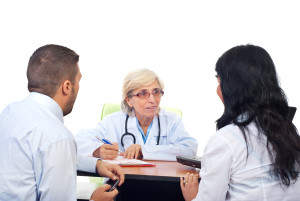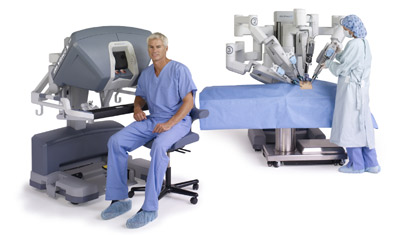 According to the National Osteoporosis Foundation (NOF), approximately 8 million women in the United States have osteoporosis, a disease that can cause bones to break with something as unavoidable as a sneeze. All women should be aware of the bone health risks they face over age 50. As women age, and particularly during the 5 to 7 years following menopause, they can lose up to 20 percent of their bone density due to decreasing estrogen levels, making their bones more fragile, and putting them at greater risk of injury. Read on to learn about the bone health risks women face after age 50, and what you can do to protect your bones at age 50, and well into the future.
According to the National Osteoporosis Foundation (NOF), approximately 8 million women in the United States have osteoporosis, a disease that can cause bones to break with something as unavoidable as a sneeze. All women should be aware of the bone health risks they face over age 50. As women age, and particularly during the 5 to 7 years following menopause, they can lose up to 20 percent of their bone density due to decreasing estrogen levels, making their bones more fragile, and putting them at greater risk of injury. Read on to learn about the bone health risks women face after age 50, and what you can do to protect your bones at age 50, and well into the future.
Bone Health Risk Factors and Your Healthy Bone Protection Plan
It’s never too late to make the types of healthy lifestyle changes needed to protect your bone health. Follow these tips below to mitigate the chances of developing osteoporosis or other bone health issues as you age.
- Obtain a bone density test from your doctor to assess your current bone health. All women should receive a bone density test during menopause, or earlier, depending on the presence of certain health factors, to determine their risk of bone health complications.
- Consume plenty of calcium. 99 percent of the calcium your body needs is stored in your bones. Women over 50 need about 1,200 milligrams of calcium per day to maintain healthy bones.
- Consume plenty of vitamin D. Just like calcium, vitamin D is essential to maintaining healthy bones as it helps to aid in calcium absorption. Without enough vitamin D, women may lose up to 4 percent of their skeletal mass every year. To maintain healthy vitamin D levels, seek out fortified dairy products, leafy greens, and natural sunlight.
- Eat more fresh vegetables and fruits. In addition to vitamin D, fruits and vegetables offer high levels of other nutrients that are key for bone health, such as vitamin K, vitamin C, potassium, magnesium, and several B vitamins.
- Add supplements as needed. Talk to your doctor about supplementing your diet to achieve the necessary vitamins and minerals. Women ages 19 to 50 need about 1,000 milligrams of calcium and 600 international units (IUs) of vitamin D per day. After menopause, or around age 50, women need about 1,200 milligrams of calcium a day, and over age 70, women need about 800 IUs of vitamin D.
- Stay active. Throughout your life, to build and maintain healthy bones, stay active with weight-bearing exercises and activities that are conducted standing up, such as running, walking, aerobics, and dancing. At least 30 minutes of activity most days is optimal for bone health.
- Maintain a healthy weight. Women who are underweight are at a higher risk of having weaker bones, putting them at a greater risk of breakage.
- Reduce caffeine. Caffeine can cause your body to eliminate calcium more quickly. Reducing your consumption of caffeinated coffee, tea, soda, and caffeinated energy drinks, mitigates these effects.
- Quit smoking. As if you didn’t need another reason to quit smoking, tobacco use is the number one cause of bone loss and bone fractures in women over age 40.
- Moderate alcohol consumption. Women who drank alcohol heavily during their body’s formative teenage years may suffer from irreversible skeletal damage and be at a greater risk of developing osteoporosis as an adult. On the other hand, moderate alcohol consumption, such as a glass of wine per day in adulthood, may help to protect bones. In sum, if you’re going to drink alcohol, simply drink moderately and don’t overindulge—at any age.
For more information about maintaining optimal bone health, or to schedule a bone density test, talk to your doctor. He or she will help you understand your unique risk factors, and the lifestyle changes you can make now for healthier bones in your future.
Chouchani, Sayegh and Robinson MD is a top OB-Gyn practice located in Western New York. We are currently accepting new patients. Give us a call today to schedule your first visit. We look forward to meeting you.
More
 What to Expect, and Why It’s Important
What to Expect, and Why It’s Important
You’re finally entering your third trimester. That means that baby’s arrival is getting close, and you’re about to begin what may be the most physically challenging time of your pregnancy as your baby reaches its full pre-birth size. You can expect just as much support from your OBGYN as you’ve received in your first and second trimester. He or she will work closely with you to help you prepare for the birth of your baby in these critical final weeks. Here’s what you should expect from weeks 28 through 40.
More Frequent OBGYN Visits
During your last trimester, you’ll be meeting with your OBGYN more frequently. You will have a prenatal visit every two weeks up until week 36, and then you’ll be meeting with your OBGYN weekly. Consider bringing your partner or labor coach with you during your third trimester doctor visits. You can expect regular weight checks, blood pressure checks, and urine checks that will test for protein in the urine. He or she will also continue to monitor baby’s heartbeat and activity, and may also perform pelvic exams to determine if your cervix is beginning to dilate.
Baby’s Movement
Pay attention to how much movement you feel from your baby, and keep your doctor informed if you observe anything concerning or any significant changes. In your third trimester, you should be noticing that baby will have very active periods, and times when he or she is not active at all — both of which are normal and expected. If baby suddenly seems to be less active, eat a snack and then lie down for a few minutes. If you still don’t detect much movement, call your OBGYN to describe what you’ve observed.
Screening Tests, Lab Tests, and Ultrasounds
You will likely receive a screening test during your third trimester for group B streptococcus (GBS), a common bacterium often carried in the intestines or lower genital tract that can cause complications to a newborn if the baby is infected during a vaginal delivery.
Your OBGYN may order additional testing during your last trimester if you:
Pelvic Exam
As you progress through your third trimester, your doctor may complete a pelvic exam to identify any cervical changes. Before baby arrives, your cervix will begin to soften, dilate, and thin (efface), changes that are typically measured in centimeters and percentages. Once you reach 10 centimeters dilated and 100 percent effaced, you’re ready to start pushing, which makes monitoring changes to your cervix important.
Fatigue
Expect to feel tired during your last trimester. Much of your energy is being diverted to help support baby’s final growth spirt. Don’t fight the feelings of fatigue. Make sure you are getting enough rest each day. You may want to think about starting to reduce your number of daily activities, and toward the end of your third trimester, you may want to talk to your doctor about cutting back your work hours if applicable.
Nutrition and Exercise
Even though you’re approaching the end of the finish line, you need to stay the course with the diet and exercise plan you’ve created with your doctor. Be sure to eat foods high in protein, and eat small amounts of vegetables regularly. Also, be sure to get some exercise, such as a short walk, each day.
Baby’s Positioning
Toward the end of your last trimester, your OBGYN will begin estimating your baby’s weight and will work to determine his or her position. Your baby should be positioned head first in the uterus. An ultrasound may be ordered to confirm the baby’s position and to determine the level of amniotic fluid around the baby.
When to Call Your OBGYN
If you experience any of the following, call your OBGYN:
- You have any bleeding.
- You are experiencing headaches.
- You notice increased vaginal discharge with odor.
- You have a fever, chills, or pain with urination.
- You experience changes to your eyesight or have blind spots in your vision.
It’s also time to call your OBGYN when your water breaks, or if you begin experiencing regular, painful contractions. When this happens, don’t be alarmed. Baby is just preparing for his or her grand entrance.
Did you miss part 1 and 2 of our prenatal care series? If so, please check out the links below…
Prenatal Care in Your First Trimester
Prenatal Care in Your Second Trimester
More
 What to Expect, and Why It’s Important
What to Expect, and Why It’s Important
You’re a third of the way through your pregnancy and feeling strong and confident. Your first trimester morning sickness pains are behind you, you’re rocking your baby bump, and you’re excited because you’re only a few weeks away from learning the gender of your baby. Keep in mind that prenatal care is just as important in the second trimester as it is in the first and third. You should expect more visits to your OBGYN, more healthy eating and activity, and exciting memories with your baby.
OBGYN Visits
During your second trimester, your doctor will likely want to see you about every four weeks. During your appointments, your OBGYN will continue to monitor your blood pressure and your weight gain. He or she will also be able to measure your baby’s growth during the second trimester.
Starting when you reach the mid-point in your pregnancy, your doctor will begin measuring the distance between your pubic bone and the top of your uterus. This measurement, known as your fundal height, helps estimate your baby’s size and growth rate. From week 20 to week 36, your fundal height, in centimeters, should roughly correspond to how many weeks pregnant you are.
During your second trimester, your doctor will monitor baby’s heartbeat, likely something you’ll hear for the first time around week 12 — one of the most memorable pregnancy moments for moms and dads.
Baby Movement
You’ll first start to feel your baby kicking and moving around within your belly during your second trimester. Be sure to let your OBGYN know when you first notice that fluttery feeling.
Baby’s First Photoshoot
You should expect a fetal ultrasound that will show you images of your baby in the uterus, and may be able to tell you the baby’s gender. Not only is this an emotionally significant moment in your pregnancy, this test is vital to helping your OBGYN identify the risk of any anomalies.
Second Trimester Testing
Just as you experienced during your first trimester, you should expect blood tests during your second trimester. These tests will monitor your blood count and iron levels, identify possible infection, and determine your risk for gestational diabetes. You will also receive additional urine tests to screen for infections, and high protein levels that may be an indication of a urinary tract infection or, if accompanied by high blood pressure, a sign of preeclampsia.
Depending on what screening tests were conducted in the first trimester, you may also have the opportunity to conduct genetic testing, or you may need to be monitored for a negative Rh factor. Also, depending on what previous screening tests or the ultrasound uncovered, your OBGYN may recommend additional diagnostic tests, such as amniocentesis. This test can detect chromosome abnormalities, neural tube defects, and other genetic disorders.
A note about the flu vaccine: If your second trimester spans flu season, your OBGYN will likely speak with you about the benefits of receiving the flu shot during your second trimester.
As always, at any point throughout your pregnancy, your doctor is available to answer any questions or concerns that you may have. Never hesitate to ask a question, or call for an extra appointment.
At Chouchani, Sayegh and Robinson, we are accepting newly pregnant and pregnant patients. Call for an appointment today.
Did you miss last week’s post about what to expect during the first trimester of pregnancy? Read on to find out more.
More
 What to Expect, and Why It’s Important
What to Expect, and Why It’s Important
Your doctor or at home pregnancy test has just confirmed it: you’re pregnant! You may not be showing yet, but the first three months of your pregnancy are some of the most critical for ensuring your baby has a healthy start and that you have a successful, and comfortable pregnancy. A healthy first trimester is heavily dependent on your prenatal care. Read on to learn what to expect in those first three months, and how proper prenatal care can help keep you, and baby, healthy.
Visiting Your OBGYN
You and your OBGYN will have a lot to talk about during your first prenatal appointment, so be sure to allot enough time and bring all of your questions. Your partner may want to attend the first visit as well. Your OBGYN will need to obtain your health history. Be prepared to discuss:
- Any past pregnancies.
- Your family, and personal medical history.
- Your menstrual cycle.
- Any medication use.
- Your lifestyle habits, particularly if you use tobacco, alcohol, or caffeine.
Know that your OBGYN will keep your information private, and that full disclosure of even uncomfortable topics, such as your family’s health history, past illicit drug use, or miscarriages, is needed so that your doctor can offer you the best treatment plan.
During your first exam, your OBGYN will also calculate your body mass index (BMI) and help you determine your ideal weight gain throughout your pregnancy. As part of an overall physical exam, he/she will conduct a pelvic exam and measure your blood pressure, breathing rate, and heart rate; and work to determine any possible risk factors that will need to be monitored throughout your pregnancy.
Lab Tests
Be prepared to complete a blood test during your first prenatal exam. The test will be used to identify a variety of factors, including:
- A complete blood count (CBC). Your blood type will also be determined.
- Your Rhesus (Rh) status. The Rh factor is a protein that can be present on the surface of red blood cells. The Rh factor is passed down through parents’ genes to their children. The Rh factor can cause pregnancy complications if you are Rh negative and your fetus is Rh positive, so your OBGYN will want to identify this possibility as early as possible.
- Your hemoglobin levels. Low hemoglobin is a sign of anemia, and will need to be addressed in the first trimester.
- Your immunity to certain infections. In particular, your OBGYN will need to know your immunity to rubella, and chickenpox.
- Exposure to sexually transmitted diseases. Your doctor will want to determine if you have been exposed to hepatitis B, syphilis, gonorrhea, chlamydia, or HIV, the virus that causes AIDS.
Screening Tests
During your first trimester, screening tests may be conducted to determine possible fetal abnormalities. Your doctor will also do a Pap smear to look for infections or other risk factors, and will conduct a cystic fibrosis screening test to determine if you may be a carrier for the disease. A urine test will also be conducted to test for sugar or protein in your urine, which could be a sign of gestational diabetes or high blood pressure.
An Ultrasound
Your OBGYN will conduct an ultrasound and attempt to see the baby and listen to his/her heartbeat, though it may not be audible until week six or seven.
Genetic Testing
During your first trimester, you will have the option of speaking with a genetic counselor and or being screened for genetic disorders that could lead to birth defects, such as Down syndrome or brain and spinal column defects. Women who may be at higher risk for giving birth to a baby with a genetic disorder include:
- Women, age 35 or older.
- Women who have had a previous fetus with a genetic problem.
- Women with a family history of inherited birth defects.
Nutrition and Vitamins
Your OBGYN will give you a plan for proper diet and nutrition for both the first trimester, and throughout your pregnancy. It will include how much exercise or physical activity you should receive, optimal nutritional goals, medication use, and the prescription of essential prenatal vitamins with iron for use during your pregnancy.
After your first prenatal exam, expect to meet with your OBGYN monthly as he/she will want to closely monitor your progress and have the opportunity to identify any health risks early.
Your first trimester will be an exciting time for you and your family. Rely on your OBGYN during your first trimester, and throughout your pregnancy, to be your best health advocate and resource for you and your baby. Most importantly, never hesitate to contact your OBGYN if you have any questions or concerns. Early detection of possible risk factors will help keep you and your baby healthy and comfortable throughout your pregnancy.
Are you newly pregnant?
The team at Chouchani, Sayegh and Robinson (previously Bagnarello) are accepting new patients. Just give us a call today to make your first appointment.
More
 “I can’t be infertile. I already have a child. So, what’s wrong with me?” These words are spoken too frequently by loving women struggling to expand their families. Infertility is a heartbreaking condition that impacts 7.5 million American women. While many associate infertility issues with couples striving to conceive their first child, more than three million women who have already had a child find themselves unable to conceive a second time, leaving them frustrated and uncertain.
“I can’t be infertile. I already have a child. So, what’s wrong with me?” These words are spoken too frequently by loving women struggling to expand their families. Infertility is a heartbreaking condition that impacts 7.5 million American women. While many associate infertility issues with couples striving to conceive their first child, more than three million women who have already had a child find themselves unable to conceive a second time, leaving them frustrated and uncertain.
If you’re looking to grow your family, but are experiencing difficulties conceiving after your first child, talk to your OBGYN about the possibility that you are experiencing secondary infertility. To prepare for your conversation, read on to learn more about this condition, and its causes.
Secondary Infertility Defined
Secondary infertility occurs when a woman is unable to get pregnant, or carry a pregnancy to full term, after she has had her first child. Your OBGYN may diagnose you as experiencing secondary infertility if:
- You have already given birth without the use of medical support or fertility medications but are then unable to get pregnant again, or you experience recurrent miscarriages, and;
- You are under age 35 and have been trying for one year to get pregnant, or;
- You are age 35 or older and have been trying for six months to get pregnant.
Secondary Infertility Causes
Just like with primary (or first time) infertility, a wide variety of factors in both the male and female partner could be the cause of secondary infertility. In some cases, the underlying cause of a woman’s infertility may have worsened after her first birth. To determine the exact cause of any conception issues you face, speak with your OBGYN. What follows, however, is a list of possible causes.
- Advanced reproductive age, which could lead to poor egg quantity or quality.
- Endometriosis, which occurs when tissue that normally lines the uterus grows outside the uterus.
- Pelvic adhesions, a condition that makes it difficult for an egg to be picked up by the fallopian tube, and could be caused by endometriosis or prior abdominal scarring.
- Asherman’s syndrome (intrauterine adhesions), which may have developed after a complicated earlier pregnancy, such as one in which a uterine infection occurred that caused the development of adhesions around the fallopian tube.
- Poor sperm quality or quantity, which could be caused by changes in a man’s health, new medications, or excessive weight gain.
- Defective ovulation, which may or may not be caused by excessive weight gain.
- Smoking, by either the male or female partner.
- Pelvic or uterine scarring.
- A blocked fallopian tube(s).
- Irregular menstrual cycles.
- Being underweight.
- Excessive drinking.
Treatment Options
If you fear you may be experiencing secondary infertility, start by speaking with your OBGYN. He/she can prescribe a fertility treatment that will best address your specific complications. In most cases, treatments for secondary infertility are the same as those used to treat primary infertility. Recommended treatments may include assisted reproductive technologies (ART), medications, fertilization procedures, and egg donation.
What’s most important to remember is that you are not to blame for your inability to conceive a second (or third, or fourth) time. Talk to your OBGYN. Together, you can work to identify the cause of your struggles and determine a plan that will help you bring another beautiful life into the world.
More
 Infertility. Go ahead and say the word out loud. There is no reason to feel embarrassed or ashamed if you fear you may be experiencing infertility issues. Rather than fearing that infertility is a word that should go unspoken and unacknowledged, learn the truth about this treatable condition, and when you should seek help.
Infertility. Go ahead and say the word out loud. There is no reason to feel embarrassed or ashamed if you fear you may be experiencing infertility issues. Rather than fearing that infertility is a word that should go unspoken and unacknowledged, learn the truth about this treatable condition, and when you should seek help.
Infertility Defined
Infertility is a condition of the reproductive system. Not entirely a female-related condition, approximately 30 percent of infertility is due to a female factor, 30 percent is due to a male factor, and the remaining 40 percent is due to problems in both partners or some other unexplainable component.
Infertility-Related Definitions
What follows is a list of some common terms associated with infertility that you should familiarize yourself with if you feel you may be experiencing this condition.
ART (Assisted Reproductive Technology) – Any procedure where a woman’s eggs are surgically removed from a woman’s ovaries and combined with sperm to assist a woman in getting pregnant. IVF, GIFT, and ZIFT are all forms of ART.
Cryopreservation – The process of freezing extra embryos from a couple’s ART procedure for potential future use.
DES Exposure – A possible cause of infertility, Diethylstilbestrol (DES) is a synthetic form of estrogen that was prescribed to pregnant women between 1940 and 1971 to prevent pregnancy complications. It is now known that DES may be the cause of premature birth, miscarriage, and ectopic pregnancy among daughters born to mothers who were prescribed DES before it was banned by the Food and Drug Administration (FDA).
Endometriosis – A possible cause of infertility, endometriosis is a painful chronic condition in which tissue, like that which lines the uterus, develops outside the uterus in areas such as the abdomen, on the ovaries, fallopian tubes, and ligaments that support the uterus.
Follicle-Stimulating Hormone (FSH) – A hormone produced by the pituitary gland that helps an egg mature and be released. High levels of FSH may be an indication of infertility caused by low ovarian reserves.
Gamete Intrafallopian Transfer (GIFT) – A procedure to treat infertility in which a woman’s eggs are removed, mixed with sperm, and immediately placed into her fallopian tube.
In Vitro Fertilization (IVF) – A procedure to treat infertility in which a woman is prescribed an ovulation stimulating medication to produce an excess number of eggs. The eggs are surgically removed and fertilized in a dish with sperm. If fertilization is successful, the embryo is transferred back to the woman’s uterus.
Intracytoplasmic Sperm Injection (ICSI) – A procedure used to treat infertility in which a single sperm is injected directly into an egg.
Intrauterine Insemination (IUI) – Formerly known as artificial insemination, IUI is a procedure used to treat infertility. The procedure takes the male’s sperm, washes and treats it, then injects it into the woman during ovulation to increase the chances of conception.
Luteal Phase Defect (LPD) – A possible cause of infertility, LPD occurs when the ovaries don’t release enough progesterone, or the uterine lining does not adequately respond to the hormone.
Male Factor Infertility (MFI) – A term used when a man has a lower than normal chance of fertilizing an egg without assistance.
Miscarriage – Also referred to as “spontaneous abortion,” a miscarriage is the spontaneous loss of a fetus before the twentieth week of pregnancy.
Reproductive Endocrinologist – A specialist who identifies and treats infertility in both men and women.
Tubal Disease – A possible cause of infertility, tubal disease is a disorder in which a woman’s fallopian tubes are blocked or damaged, restricting the egg and subsequent embryo from making it to the uterus.
Uterine Factor – A structural or functional disorder of the uterus that results in reduced fertility.
Zygote Intrafallopian Transfer (ZIFT) – A procedure used to treat infertility in which a woman’s eggs are surgically removed and fertilized in a dish with sperm. If fertilization is successful, the embryo is transferred back to the woman’s fallopian tube.
When Should You Seek Help?
You may be diagnosed with infertility if you are under age 35 and have had unprotected, well-time intercourse for one year without being able to get pregnant and/or carry a baby to term. You may also be diagnosed with infertility if you are age 35 or older and have had unprotected, well-timed intercourse for six months without being able to get pregnant.
If either of these scenarios describes you, and you think you may be experiencing infertility, speak with your OB-GYN. He/she can properly diagnose you and help guide you toward a treatment plan that is right for you and your family. And if you are looking for a new practice and live in the WNY area, give our team a call today. We are accepting new patients.
More
 Menopause. The change. An uncertain time in a woman’s life when her body makes permanent, and unfamiliar changes. For the millions of women who go through menopause each year, the symptoms of this altering state can feel overwhelming, leading many women to dread the day that they realize menopause has arrived. If you are experiencing menopause now, or are anticipating the day when the first signs or symptoms appear, familiarize yourself with our tips for easing the symptoms of menopause so that when the change does occur, you can face it confidently and without distress.
Menopause. The change. An uncertain time in a woman’s life when her body makes permanent, and unfamiliar changes. For the millions of women who go through menopause each year, the symptoms of this altering state can feel overwhelming, leading many women to dread the day that they realize menopause has arrived. If you are experiencing menopause now, or are anticipating the day when the first signs or symptoms appear, familiarize yourself with our tips for easing the symptoms of menopause so that when the change does occur, you can face it confidently and without distress.
Symptoms of Menopause
The symptoms that women experience during menopause — while varied — are primarily caused by a single factor: hormone changes. While every woman’s experiences will be different, what follows is a list of the most common symptoms that women experience during menopause:
• Hot flashes — a sensation of heat all over the upper body and/or flushing of the face and neck.
• Vaginal dryness, which can lead to discomfort during sex.
• Irregular periods that come more or less frequently than experienced previously.
• Periods that last for more or fewer days than experienced previously.
• Periods that are noticeably heavier or lighter than experienced previously.
• Night sweats.
• Difficulty sleeping.
• Mood swings—crying more frequently, seemingly without reason.
• Urinary tract infections.
• Urinary incontinence.
• Disinterest in sex, or feeling more comfortable about sex.
• Forgetfulness/difficulty focusing.
• Feeling stiff or achy.
Easing the Symptoms of Menopause
If you are experiencing any of these symptoms, know that you don’t have to suffer. Much of the discomfort associated with this phase of life can be treated with simple lifestyle changes and at-home remedies. Follow these tips to help ease your symptoms.
To Treat Hot Flashes:
- Avoid triggers such as spicy foods, alcohol, stress, caffeine, and hot locations.
- Dress in layers.
- Make sure you have a fan conveniently located in your home or workplace.
- When you feel a hot flash coming on, take deep, slow breaths.
To Treat Vaginal Dryness:
- To ease discomfort during sex, use a water-based, over-the-counter vaginal lubricant.
- To assist general feelings of dryness, use an over-the-counter vaginal moisturizer.
To Treat Sleep-Related Issues:
- Remaining active during the day will help you feel restful at night. Do not exercise too close to bedtime however, as such physical activity may make you feel awake immediately following.
- Avoid large meals directly before bed, and do not consume caffeine after noon.
- Do not smoke directly before bed.
- Keep your bedroom cool.
- Avoid naps during the day.
- Try to wake up and go to bed at the same time every day.
To Treat Mood Swings:
- Stay active during the day, and try to get regular sleep at night.
- Work to manage the stress factors in your life.
- Talk to your doctor to determine if you are experiencing depression and could benefit from more focused depression treatment.
To Treat Memory Problems:
- Stay active during the day, and try to get regular sleep during the night.
- To Treat Urinary Incontinence:
- Talk to your OBGYN. There may be medicines, behavioral changes, or devices that may ease your symptoms.
Hormone Therapy:
- Menopausal hormone therapy (MHT) can be an effective treatment for several of the symptoms of menopause, including vaginal dryness, mood swings, hot flashes, and night sweats.
- Low-dose oral contraceptives may help to ease symptoms if you are still receiving your period.
Feeling overwhelmed? Don’t feel like menopause is beyond your control. Start by talking to your OBGYN. He/she can help you to address your specific symptoms and devise a treatment plan that will suit your needs and ease your discomfort.
More
A hysterectomy is an operation in which a woman’s uterus is surgically removed. This may be necessary as a form of treating cancer, uterine prolapse, or other dangerous diseases or medical conditions. Commonly, a laparoscopic hysterectomy is performed as a less invasive procedure using a lighted scope inserted through small incisions. Today, thanks to advances in modern medicine, an alternate form of laparoscopic surgery is available that in many cases speeds recovery and limits discomfort even more—and it involves, robotics.
What is a Robotic Hysterectomy
In robotic-assisted laparoscopic hysterectomy, a surgeon controls the surgical operating instruments using a computer located within the operating room. The benefit to computer-assisted operations is in the ability for all movements to be as steady and precise as possible. Robotics eliminate the possibility of human error, a possibility faced by even the most skilled and experienced surgeons. In addition, robotics allow surgeons to maneuver more precisely into tiny spaces, and with a better view of the area being operated on, again helping to improve accuracy and overall procedural success.
Robotic hysterectomies are typically done under general anesthesia. Commonly, three or four small incisions are made near the belly button. Gas is pumped into the belly to inflate the area and give the surgeon a better view of the interior region. The laparoscope is inserted into one of the abdominal incisions, while the surgical instruments are inserted into the others. Using the robotic controls, the surgeon cuts the uterus into pieces small enough to be removed through the abdominal incisions, or the uterus may be removed through the vagina. The entire procedure typically lasts between three and four hours.
When is a Robotic Hysterectomy Recommended?
Your surgeon may recommend a robotic hysterectomy for any of the following reasons:
- It is a less invasive procedure compared to an open type of hysterectomy, requiring only small incisions.
- It often produces less pain and results in a shorter hospital stay.
- It typically results in an easier recovery.
- There are fewer risks of complications such as excessive bleeding, or issues related to infection.
Are There Any Risks Involved?
As with any type of procedure, there are possible risks associated with a robotic hysterectomy. Talk to your OBGYN to understand the specific risk-factors that may impact you. In general, some of the risks associated with a robotic hysterectomy include:
- A reaction to the anesthesia. Robotic-assisted laparoscopic surgery usually takes longer than open surgeries. As a result, you are under anesthesia longer, which may increase your risk of complications.
- Abdominal, or internal organ damage.
- Blood clots that may form in your legs and travel to your lungs.
- Infection.
- Bleeding.
Other Important Factors
Talk to your OBGYN if any of the following additional risk factors may apply to you:
- You or someone in your family has ever had a negative reaction to general anesthesia
- You smoke
- You are taking any other regular medications
For more information about robotic, versus open hysterectomies, talk to your OBGYN. If you are a candidate for a hysterectomy due to a medical condition, your doctor will help you decide the surgical format that will offer the best results in treating your condition. And Chouchani, Sayegh and Bagnarello MD offers robotic assisted hysterectomies featuring the Da Vinci Surgical System. For more information call our office today.
More
The frequency with which you should visit your OBGYN changes with age, and of course when you’re pregnant. It’s also important to note that if you have any concerns regarding your health, or any changes in your health, you can and should make a non-routine appointment to visit your OBGYN at any time. Outside of health concerns, what follows are general guidelines for how often you should see your OBGYN.
Women Under Age 21
Women under age 21 are encouraged to meet with their gynecologist to ensure they have a resource for any questions or concerns. It is not, however, required for women under age 21to receive an annual pelvic exam and/or pap smear unless otherwise recommended by their physician.
Women Ages 21 – 29
In general, the American College of Obstetricians and Gynecologists (ACOG) recommends that all women over 21 and under 29 should see their OBGYN annually in order to have a pelvic exam. In addition, this annual well woman’s visit should include a general women’s wellness exam, breast exam, and a pap smear.
Women Ages 30 – 65
Women between the ages of 30 and 65 should also receive a pelvic exam every year, however as of 2012 the U.S. Preventive Services Task Force, American Cancer Society, and ACOG recommend that women ages 30 – 65 who have had negative pap test results in the past should have a combination pap and human papillomavirus (HPV) test only once every five years.
If within the last three years of turning 30, you’ve had an abnormal pap smear, a history of dysplasia, are HIV positive, or have been exposed before birth to diethylstilbestrol (a synthetic form of estrogen sometimes prescribed to pregnant women between 1940 and 1971), your gynecologist may still recommend that you receive a pap smear more frequently than once every two years.
Women Over Age 65
Women over age 65 without a history of precancerous cells or cervical cancer, and who have had either three-consecutive negative pap test results or two consecutive negative pap/HPV tests within the previous 10 years, do not need to continue receiving regular pap tests, as long as they have no history of precancerous cells or cervical cancer.
Women Who Have Had a Hysterectomy
Women who have had a hysterectomy and no longer have a cervix do not need to have regular pap tests, unless they’ve had precancerous cells in the cervix or a reproductive cancer, such as uterine cancer, in the past.
Sexually Active Women
While the guidelines above are general recommendations, it is also a best practice that women begin regularly seeing their gynecologist when they become sexually active, or at least within two to three years of becoming sexually active.
When You Should Schedule a Non-Routine Appointment
You can always contact your gynecologist for questions or concerns. You should definitely schedule a non-routine appointment if you experience any of the following:
- Vaginal pain or discomfort
- Abnormal or irregular bleeding not associated with your period
- Changes in your menstrual cycle that could be an indication of pregnancy or the onset of menopause
If You’re Pregnant
In general, women who are pregnant should meet with their OBGYN with the following frequency:
- Weeks 4 to 28: 1 prenatal visit a month
- Weeks 28 to 36: 1 prenatal visit every 2 weeks
- Weeks 36 to 40: 1 prenatal visit every week
If you have any risk factors associated with your pregnancy, your OBGYN may recommend more frequent visits.
Remember that your annual exam is also your time to discuss with your gynecologist any questions or concerns that you may have regarding stress, pregnancy or family planning, or any other related concerns or questions. As the recommendations, relative to the frequency of women’s health visits are continually being reexamined, always check with your doctor for the latest criteria.
If you are looking for a new Ob-Gyn physician and live in the Western New York area, give our office a call today. We are accepting new patients!
More
What does your stress feel like? Is it a weight on your shoulders? A nervousness in your gut? A pounding in your head? What causes these feelings of stress? Work deadlines? The busy schedule that comes with being a mom? The pressure to make everyone around you happy and comfortable?
Believe it or not, you can reduce your stress levels, no matter what is causing them, and mitigate the stress symptoms that are bringing you down. Read on for nine mood busting tips that will help you take control of your mind, body, and soul, control your stress, and carry on with confidence.
- Deep Breathing. Breathing exercises are one of the most effective ways of learning to quiet your mind, calm your racing heart, and lower anxiety levels. When you feel your stress levels escalating, take a five-minute break and focus on your breathing. Place your hand on your belly, and slowly inhale through your nose and then exhale through your mouth, feeling your breath move from your abdomen to the top of your head. This simple exercise can help you learn to control your anxiety levels and reduce feelings of stress.
- Meditate. Meditation has been proven to help ease anxiety and improve your mood. Even a few minutes per day of quiet, inward reflection and focused breathing can help train your brain to better manage stressful moments when anxiety flares.
- Exercise Regularly. A regular fitness routine, especially one that involves cardio or yoga, can help you reduce stress. It may seem like the last thing you have the energy to do after a stressful day is haul yourself to the gym, but in reality, a quick sweat session can reduce stress, release tension, and help calm your nerves.
- Maintain a Healthy Diet. Well-nourished bodies are better able to cope with stress. Your diet has a profound impact of your mental and emotional health. If you smoke, regularly consume alcohol or illicit drugs, over-consume sugar, and/or drink caffeine, consider cutting back on these stress-boosting diet factors.
- Rely on Your Social Network. We don’t necessarily mean Facebook. When times get tough, reach out to the family and friends in your life who you can rely on for emotional support. Unburden your worries on a sympathetic ear. Talking through your problems can help you see solutions to your stresses and find your internal calm. Face-to-face support is always better and encourages you to get out, get moving, and enjoy a change of scenery.
- Stick to a Regular Sleep Schedule. Sleep deprivation can leave you feeling agitated, restless, and stressed the next day. Make sure you get enough sleep—whatever the right number of hours is for you—to allow you to wake up feeling refreshed, comfortable, and ready to take on the day.
- Find the Humor. The act of laughing helps your body fight stress and is an inexpensive, and effortless way to reduce stress. Put on your favorite comedy or get together for a girls’ night out. What’s most important is that you give your stress somewhere to go by emitting it as laughter.
- Sing and Dance. Music can have a powerful effect on our emotions. Crank up your favorite tunes and sing, or dance. Movement and song can help release tension, give you a reason to smile, and help you focus on less emotionally strenuous factors in your life. If you prefer soothing music to upbeat music, consider a playlist of classical tunes, or ocean sounds. Listen to it while you relax quietly, focusing on your breathing and heart rate.
- Manage Your Time. One of the biggest stress factors that many people face is an overburdened schedule. Remember that it’s okay to say no to requests and invitations. Rather than packing each and every day full of work, volunteer shifts, social engagements, and favors to others, make sure each day includes a period of time that is just for you to ensure self-care and a daily moment of stress-free mental and physical rest.
Remember, your mood can be controlled by you and the decisions that you make to choose a healthy life. Don’t feel overwhelmed if you’re wondering where to start. Choose just one of these mood-busters, and then add more to your daily routine one at a time until you feel you have taken control of your stress factors. Remember, you can always talk to your doctor. He or she can give you advice for how to further manage the stress factors in your life so you can be the best version of you for your family, your friends, and yourself.
More
 According to the National Osteoporosis Foundation (NOF), approximately 8 million women in the United States have osteoporosis, a disease that can cause bones to break with something as unavoidable as a sneeze. All women should be aware of the bone health risks they face over age 50. As women age, and particularly during the 5 to 7 years following menopause, they can lose up to 20 percent of their bone density due to decreasing estrogen levels, making their bones more fragile, and putting them at greater risk of injury. Read on to learn about the bone health risks women face after age 50, and what you can do to protect your bones at age 50, and well into the future.
According to the National Osteoporosis Foundation (NOF), approximately 8 million women in the United States have osteoporosis, a disease that can cause bones to break with something as unavoidable as a sneeze. All women should be aware of the bone health risks they face over age 50. As women age, and particularly during the 5 to 7 years following menopause, they can lose up to 20 percent of their bone density due to decreasing estrogen levels, making their bones more fragile, and putting them at greater risk of injury. Read on to learn about the bone health risks women face after age 50, and what you can do to protect your bones at age 50, and well into the future.








